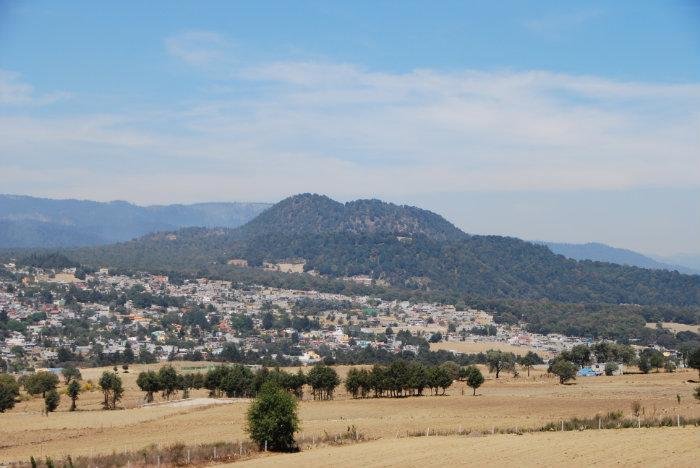MessageToEagle.com – Before being destroyed and abandoned in 50 B.C. by a volcanic eruption, Cuicuilco was a significant ancient site on the southern shore of the Lake Texcoco in the southeastern Valley of Mexico.
Today, an entire ancient city is buried beneath the ashes, but one structure survived – the Cuicuilco circular pyramid.
Cuicuilco circular pyramid was a truly impressive sight. This ancient structure was nearly 20 meters high and more than 110 meters across. The pyramid was raised as a religious monument, crowned by a temple built on the terminal platform and surrounded with tombs. The building of such a structure obviously required a protracted and organized effort under the command of the priests.

It also served as an ancient astronomical observatory. Scientists discovered that at Cuicuilco, when observing on the circular pyramid, the Sun rises on March 23 and September 20 above a mountain peak on the east horizon.
Cuicuilco was originally founded as a farming village at about the same time as Coapexco about 1100 B.C. and it had one of the earliest irrigation systems in the Central Mexican highlands. In time, the place grew larger and larger and by 200 BC, Cuicuilco was one of the most important and larger centers in Central Mexico, and it has been estimated that its area covered approximately 400 ha, with a population of 20,000 people.
According to translations of ancient Nahuatl, Cuicuilco is variously interpreted as the ‘Place of Power’ or the ‘Place of the Rainbow’ and the ‘place where they make songs and dances’.
See also:
Intriguing Ancient Ceremonial Site Of El Tajin In Mexico
‘Tonina Chiapas’ Mayan Pyramid In Southern Mexico Is Among The Largest Yet Found
Great Pyramid of Cholula: World’s Largest Pyramid
More Fascinating Ancient Civilizations And Places
The circular pyramid was first discovered in 1920 by archaeologist Manuel Gamio, the first investigations at Cuicuilco were carried out by Byron Cumming, between 1923 and 1924, which led to the discovery of the civic core of the site and the main pyramid.
Archaeological excavations revealed that this place served as religious site. Scientists found stone offerings and the use of ceramics as grave goods.
The city grew around a large ceremonial center with pyramids and an associated urban area that included plazas and avenues bordering a series of small, shallow pools.
When volcano Xitle erupted, lava covered the site as far as 10 meters deep and the entire site was destroyed and the glory and power of Cuicuilco was buried beneath the ashes.
Circular pyramids are not that unusual as it might seem. A remarkable, ancient archaeological site Guachimontones (‘Los Guachimontones’) is located just outside the modest little town of Teuchitlán, Jalisco, 43 kilometers (26 miles) west of Guadalajara, Mexico.
At first, very little was known about who had built this remarkable place with rounded pyramids, several conical mounds or pyramids, terraced patios surrounded by circular ball games, an amphitheater, some terraces, buildings and sophisticated ancient shaft tombs. Dating to the first centuries A.D., these tombs had small burial chambers at the bottom of vertical cuts up to 60 feet deep.
In 2014, researchers discovered an impressive 2,000-year-old circular pyramid in Bolivia.
Copyright © MessageToEagle.com All rights reserved. This material may not be published, broadcast, rewritten or redistributed in whole or part without the express written permission of MessageToEagle.com
Expand for references






